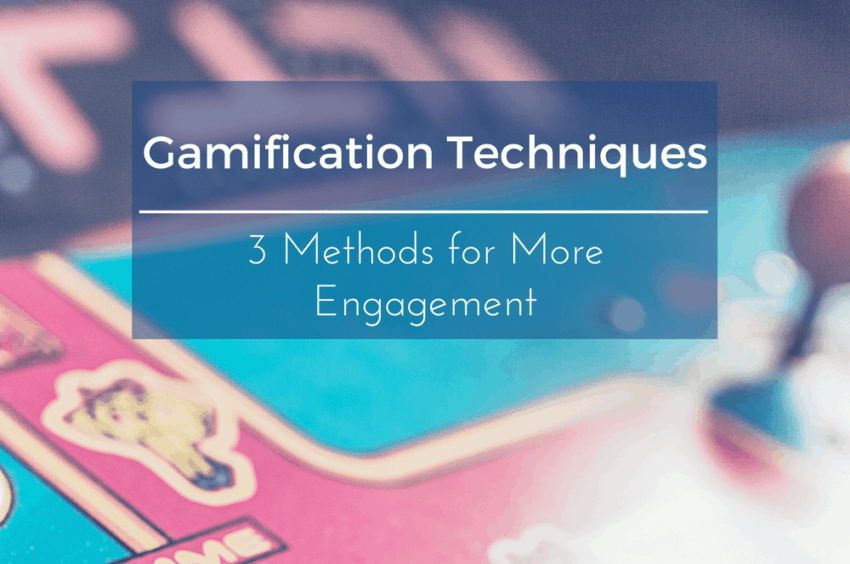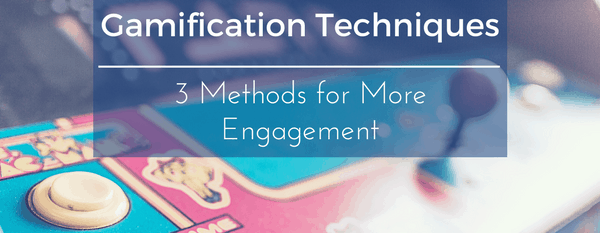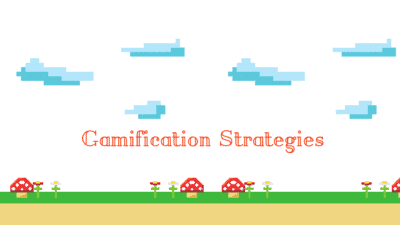Gamification Techniques for a More Engaging User Experience

We previously discussed the advantages of using gamification badges in your marketing strategy. But there are other gamification techniques to consider in case badges aren’t the right strategy for your product or service. This blog highlights three examples from three completely different properties that all use effective gamification techniques.
“Flash” gamification
What’s more exciting than a pop-up food truck? The answer is nothing (especially if you haven’t eaten lunch yet). Part of the reason for the excitement is because of the limited time frame for availability. We live in a world where limited release rules our purchasing behavior. The same idea can apply to your B2B gamification strategy.
Let’s look at the game Alphabear, a popular puzzle app. Alphabear uses limited availability to its advantage. Once a month, they offer unique levels in their game for a 7-day period (usually tied to a holiday). Users can win a special prize (in this case a digital bear) that isn’t available in the traditional confines of the game. If users are interested in this prize, they only have 7 days to play this level and collect this prize.
The advantage of implementing short-term gamification is threefold:
- It increases the opportunity for immediate engagement (users know this won’t last forever)
- You give developers and marketers an opportunity to test something as opposed to commit
- An opportunity to gather information about customer outside of the usual marketing channels
Keep the streak going
On the flip side of short-term gamification, there’s the option of getting participants to commit for the long-haul. You do this by offering incentives for maintaining “streaks.” The idea here is to tell users to do a task (or even simply login) every day to maintain a streak. You can set prizes for reaching certain streak goals (30, 60, or 90 days). They can start out as badges or other digital-only prizes. But you should incentivize long-haul participants by offering substantial prizes for huge streaks (365 days).
“Keeping the streak” is a great way to gain brand loyalty in addition to positive engagement. The more interaction you ensure a customer has with your service, the more likely they are to refer your services to someone else. They might even leave you a nice review.
Duolingo is a great example of an application that incentivizes its users to “maintain a streak.” Users receive “lingots” (in-game coin you can use to purchase specialty items) for reaching certain benchmarks. Duolingo sends reminders daily, strongly encouraging users not to miss a day of practice. I can only imagine how disappointed Duo the owl will be with me if I ever give up my streak. Make your users feel like their streak is a necessary part of their routine.
Have users create the game themselves
Finally, to get the most engagement out of your users, it’s a good idea to make them define the game for themselves. Let’s look at Fitbit as an example. When you sign up for Fitbit, you set various goals for yourself. These are all recommended by Fitbit, but you can modify them. You can take that 30-minute daily activity goal up to an hour. Maybe you want a higher step total, or you want to see how much water you can drink in a day.
Recommend to your customers how often they should be completing certain tasks or interacting with specific aspects of your product. Recommend goals and give them the option to set higher ones for themselves.
Ideally, their usage will increase based on these suggestions (and consequently, the reminders you send).
If you provide an analytics software, the goal can be to hit a certain metric daily or weekly. Even if that metric is the industry standard, having the user create that goal and stick to it for themselves is more powerful. Then, you can send encouraging notifications and reminders based around those personal goals. You can even make recommendations to make their goal a little harder if they’ve met it for a certain amount of time.
This method of gamification allows you to build an experience, but it’s up to the customer to determine what to make of that experience.
Internal Gamification
Finally, gamification shouldn’t just be applied to increase customer engagement. You can use it to boost morale internally. The next time you want to give your inside sales team an incentive, consider “flash” gamification! Give them one work week to compete and reward the winner. Alternatively, give out rewards for hitting a streak (30 straight days of over 200 calls in a day). And when you really want them to shine, have them set their own goals. Put programs in place to reward personal initiatives in the workplace.
Interested in implementing these gamification techniques for your B2B marketing strategy? We’d love to be along for the ride.
You Might Also Enjoy These Posts
Demand Generation vs Lead Generation
Gamification Strategies: Badges in B2B Marketing
Welcome To DemandZEN
DemandZEN specializes in Account-Based Demand Generation and solving the challenges around finding, engaging and converting target accounts into real opportunities for B2B Technology and Services companies.




